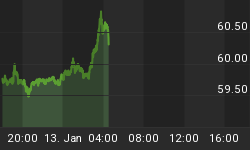"...Overcapacity - first of credit, then of real estate - drove the price of renting sharply lower, bankrupting cautious investors along with big borrowers..."
A TEXAN CUSTOMER who came to see me a few months ago told me a story which illustrates the fine mess we're in.
In the 1980s boom his neighborhood boasted not one but two commercial real-estate developers, both of whom were building shopping malls.
The one developer was cautious. He'd already built two malls successfully, and by re-investing some of his profits as equity in his new project he'd reduced his leverage and his risk.
Further along the avenue, however, was a more aggressive developer. He'd borrowed 98% of his construction costs on artificially cheap credit; money which had been pumped into the banking system by the Fed to keep the economy steaming along.
Anyway, the experienced developer was earlier into his construction project and completed it ahead of schedule - and he got his mall nearly fully occupied. His competitor, as well as being more highly geared, was slower to build and later to complete, so you can guess what happened next.
As the early '80s boom in Texan oil projects and real estate turned into bust, the new mall couldn't get any tenants, which meant there was no revenue to pay down the debt. The aggressive developer went bust, and with the local economy sagging, the near worthless debts on his empty mall were sold by the bank at just 18 cents on the dollar.
That allowed the new owners to slash the asking rents. They charged 4 cents on the original construction dollar, making a yield of 4/18 - a healthy 22% yield on their outlay. But that rent deeply undercut the other, more cautiously built shopping mall. It was charging 12 cents on its construction-cost dollar, fully three times as much.
Naturally, as the recession wore on, the cautious developer watched his tenants quit his mall for those cheaper rents down the freeway. So now the cautious developer failed too.
Why? Because overcapacity - first of credit, then of malls - had driven the local price of rented retail space down to third of its reasonable rate of return. The total rent that could be earned on two malls was significantly less than what could have been earned on one.
I have always found it difficult to make the logical step from cheap credit - which sounds so helpful - to financial collapse, which seems so regularly to follow it. This story shows how the route passes through overcapacity. Yet even overcapacity was not bad news for those investors who bought the distressed mall at 18% of its construction cost.
How were they able to get such a bargain? Simple. They could raise cash when almost no-one else could. That probably meant they were debt free at the end of the expansion, and had found a reliable store of ready value as the credit liquidation played itself out.
I like to think that lots of BullionVault users will one day be the opportunists in stories like this, though I also believe the credit crunch has a long way to go, which means it will not be for some considerable time. Gold certainly doesn't offer a 22% yield, but when other asset classes do, perhaps sellers of BullionVault gold will contribute the capital which kick-starts our economies from the bottom of the coming slump.
Until then debtors, politicians, and central bankers will call us hoarders, and accuse us of destroying the economy. It's not a label which makes me feel particularly proud, but I think I can live with it.
















